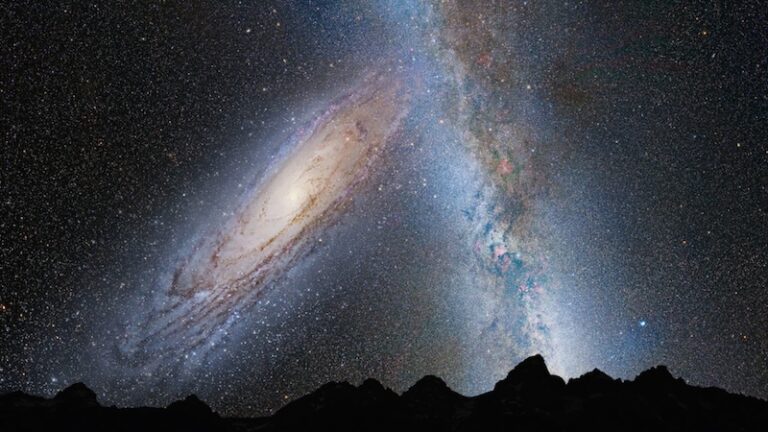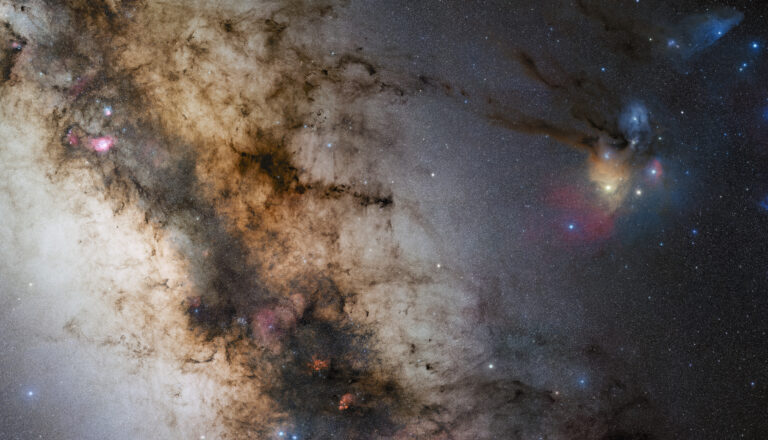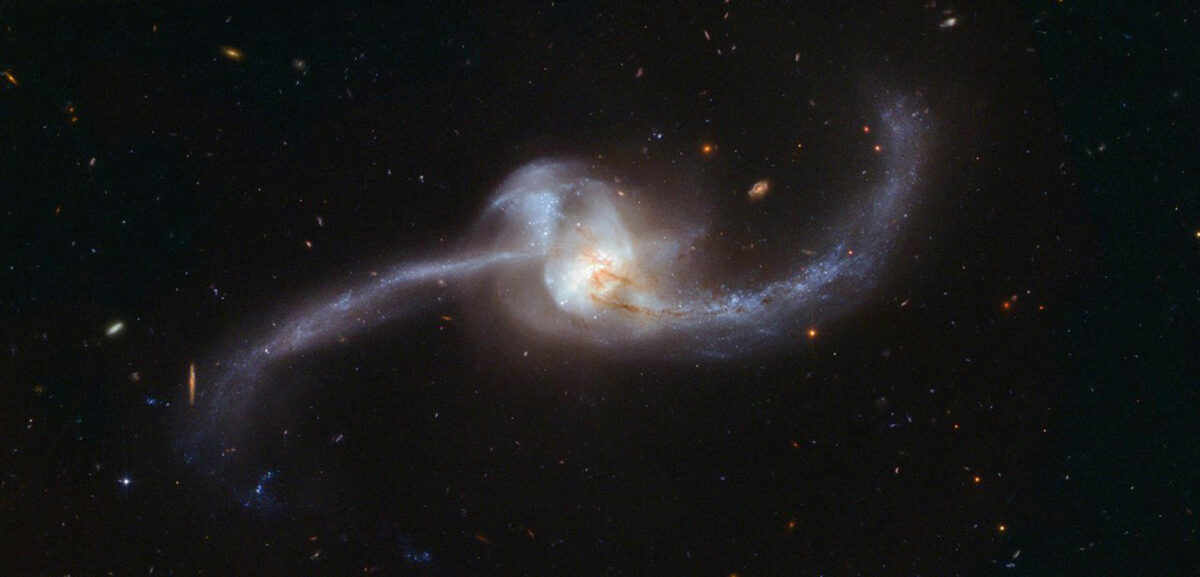
Key Takeaways:
- Gaia's data has revolutionized our understanding of the Milky Way's history, providing a three-dimensional map of nearly 2 billion objects, revealing a more violent and dynamic past than previously conceived.
- Analysis of globular clusters, particularly those identified as originating from dwarf galaxies like Gaia-Enceladus and the Sagittarius Dwarf Elliptical Galaxy, has enabled researchers to reconstruct the Milky Way's merger history, pinpointing specific merger events over billions of years.
- Several Messier catalog objects, including M2, M56, M75, M79, and M54, are identified as remnants of these past mergers, their characteristics (e.g., orbit, density) providing evidence of their extragalactic origin and the impact of these mergers.
- The data suggests that the Sagittarius Dwarf Galaxy's past interactions with the Milky Way significantly impacted our galaxy's structure, possibly playing a crucial role in the formation of our Sun and solar system.
Over the past eight years, the European Space Agency’s (ESA) Gaia space observatory has transformed our understanding of the history of our Milky Way Galaxy. From Gaia’s perch at Earth’s L2 Lagrange point, roughly 1 million miles (1.5 million kilometers) distant, it has produced the most comprehensive three-dimensional survey of the Milky Way ever made: a catalog containing the precise locations, motions, and chemical compositions of nearly 2 billion objects.
For scientists, the Gaia catalog is an astonishing treasure trove that has revealed that the Milky Way had a more violent and dynamic history than we ever imagined. Researchers have identified families of stars with common origins, related by similarities in their composition and motions. Some of these families are streams of stars flowing through and around the galaxy, flung about by gravity when the Milky Way cannibalized other, smaller galaxies.
But perhaps the most ancient relics in Gaia’s catalog are globular clusters — tightly bound, stable systems composed of tens of thousands to millions of stars, commonly found throughout the galaxy’s halo and the outskirts of its disk. Some of them are immigrants to our galaxy, having originally formed billions of years ago in the dwarf galaxies that the Milky Way devoured. They are survivors from a distant past, carrying vital records of the events that formed our galaxy.
Thanks to Gaia’s observations of these globular clusters — plus supercomputer simulations and machine-learning algorithms — researchers have been able to reconstruct the merger history of the Milky Way. They have identified dwarf galaxies and pinpointed when they made contact with our galaxy, including Gaia-Enceladus about 9 billion years ago and the Sagittarius Dwarf Elliptical Galaxy roughly 7 billion years ago.
Amazingly, you can observe many of these surviving globulars from the Milky Way’s dynamic past with a telescope from your backyard: They have been hiding from us in plain sight as objects in the famous Messier Catalog. Before Gaia, I viewed them many times, simply taking note of their appearance and some of their interesting visual features, but with no knowledge of their tremendous significance to the formation of the Milky Way. Now, I view them with a newfound sense of awe and wonder.
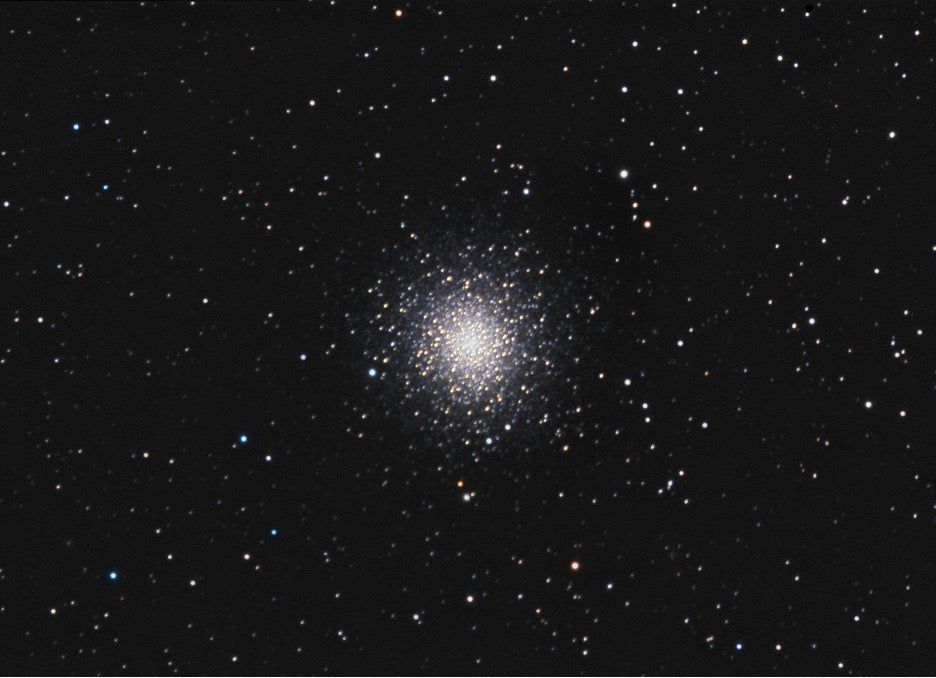
Galactic natural selection
Astronomers used to think that all of the globular clusters orbiting in our galaxy’s spherical halo had formed out of leftover gas on the outskirts of the nascent Milky Way. However, running the galactic clock backward with supercomputer simulations shows that the dwarf galaxy Gaia-Enceladus brought along several of its original globular clusters that managed to survive the merger. These remnants include M2, M56, M75, and M79.
M2 (NGC 7089) is a magnitude 6.5 globular in Aquarius, about 5° north of the star Sadalsuud (Beta [β] Aquarii) and lying at a distance of around 40,000 light-years. It is one of the largest and richest known globulars, measuring 16′ in diameter. M2 is very dense and classified as a Class II globular. (The Shapley-Sawyer classification system ranks globulars by density on a scale in Roman numerals from I to XII, with I being the densest.) Photometry measurements indicate that a 1′ by 1′ area in the center of M2 contributes 37 percent of its total light. An equal area 5′ from the center contributes a mere 0.02 percent. In small telescopes, M2 appears as a large, bright, unresolvable ball, but under careful scrutiny, it is slightly ellipsoidal in shape. Medium-sized scopes will resolve some of its outer stars, while larger apertures are needed to resolve stars toward the core. Some interesting visual features in M2 are dark lanes curving and branching across its northwest quadrant, which are visible through medium- and large-aperture scopes.
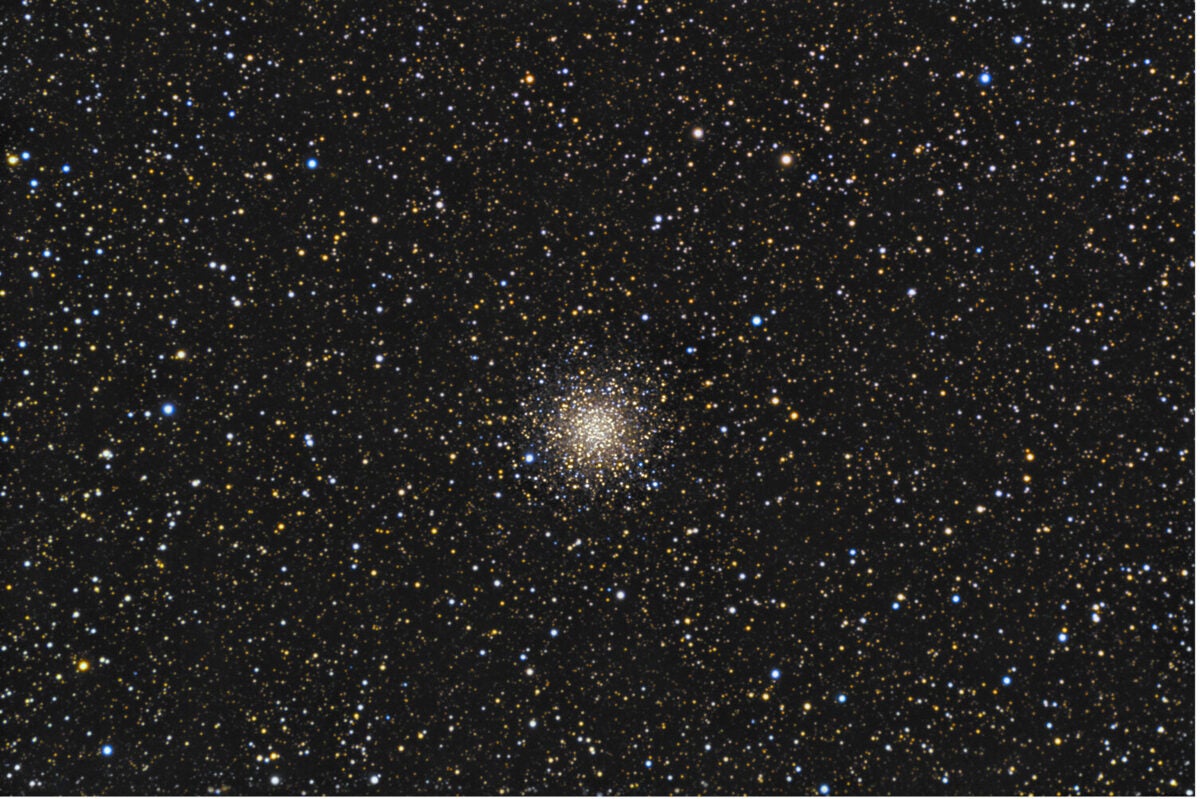
I have always felt sorry for poor M56 (NGC 6779) in Lyra because its beautiful neighbor, the Ring Nebula (M57), grabs most of the attention. Few bother to shift their telescope a short distance toward Albireo (β Cygni) to gaze upon this gem. This is a shame — while most globulars lie in sparsely populated regions outside the plane of the Milky Way, M56 dazzles at magnitude 8.3 amidst countless colorful summer Milky Way stars. M56 is one of the smallest globulars in the Messier Catalog; despite it lying closer than M2 at 33,000 light-years, it measures only 8.8′ in diameter. Through medium-sized apertures, M56 is a small circular glow, brighter toward the center, and peppered with a few individual stars. Larger apertures show an impressive compact object with many individual stars resolved toward the core, giving it a granular appearance. Interestingly, M56 has a retrograde orbit relative to the direction of our galaxy’s rotation and that of other globulars in its halo, indicating that it must have arrived from outside our galaxy.
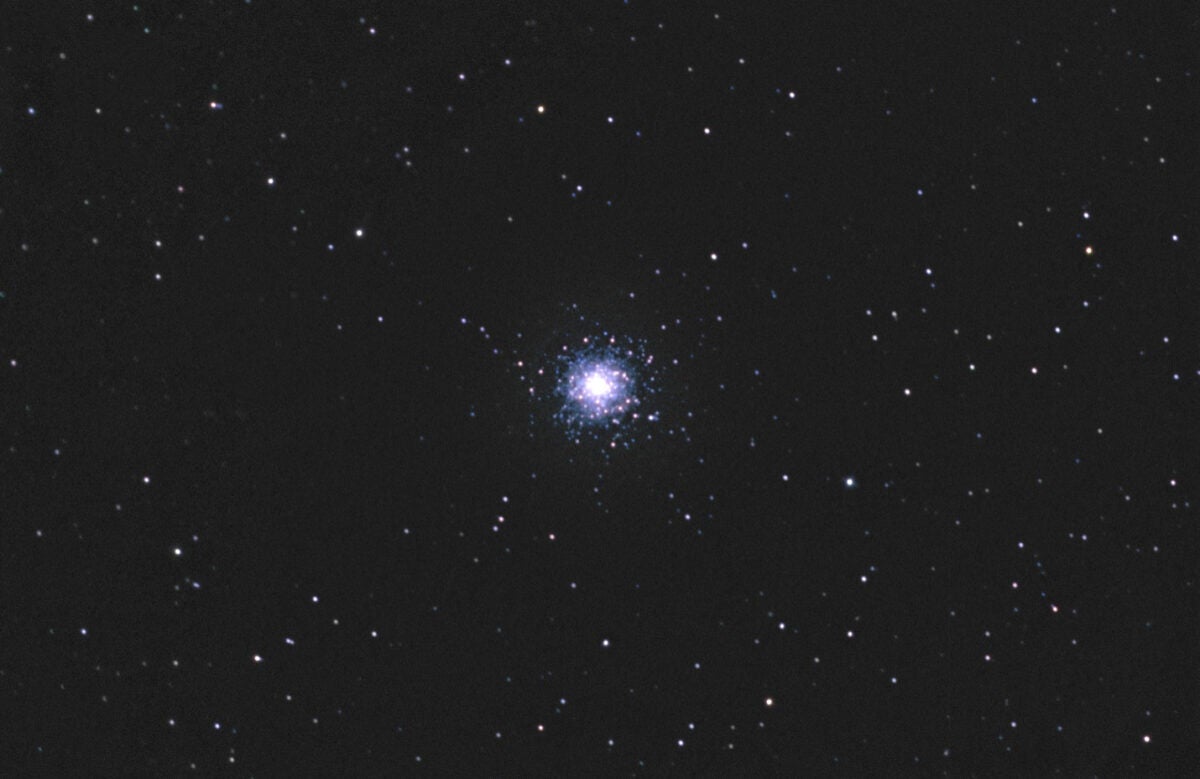
M79 (NGC 1904) is a rare wintertime globular in the southern constellation Lepus. M79 has always held a special place in my heart because of its historical significance. In 1918, Harlow Shapley determined our y plotting the distances to globular clusters. He found that they occupied a spherical distribution with many in the general direction of Sagittarius, some of which lay at tremendous distances. In contrast, there were only three in the opposite direction lying at moderate distances, one of which was M79. By correctly assuming that the center of the sphere was also the center of the Milky Way, he concluded our solar system must be located about halfway from the center toward the outer edge, giving us our biggest demotion of position in the universe since Copernicus put the Sun at the center of the solar system.
At 40,000 light-years distant, M79 is brighter and larger than M56, shining at magnitude 7.7 and measuring 9.6′ in diameter. Through a medium-sized telescope, it’s an impressive globular that resembles a bull’s eye with a small bright circular center surrounded by a larger but dimmer circle of light, all of which is dotted with numerous resolved stars. An interesting visual feature is a beautiful arc of stars on the east side of the cluster. Follow the arc southwest where it abruptly doubles back in a sharp V-shape, leading to a string of stars that trail off to the south.
Speaking of globular clusters lying at tremendous distances in the direction of Sagittarius, our next target from the Gaia-Enceladus event is M75 (NGC 6864). I sometimes lament that our views of the Milky Way’s myriad deep-sky treasures are largely restricted to our immediate region of the galaxy. But here is an opportunity to break out of these confines. When you gaze upon M75, you are peering past the southern edge of our galaxy’s central hub and viewing a globular lying at a distance of 68,000 light-years, hovering over the outskirts of the far side of our galaxy’s disk!
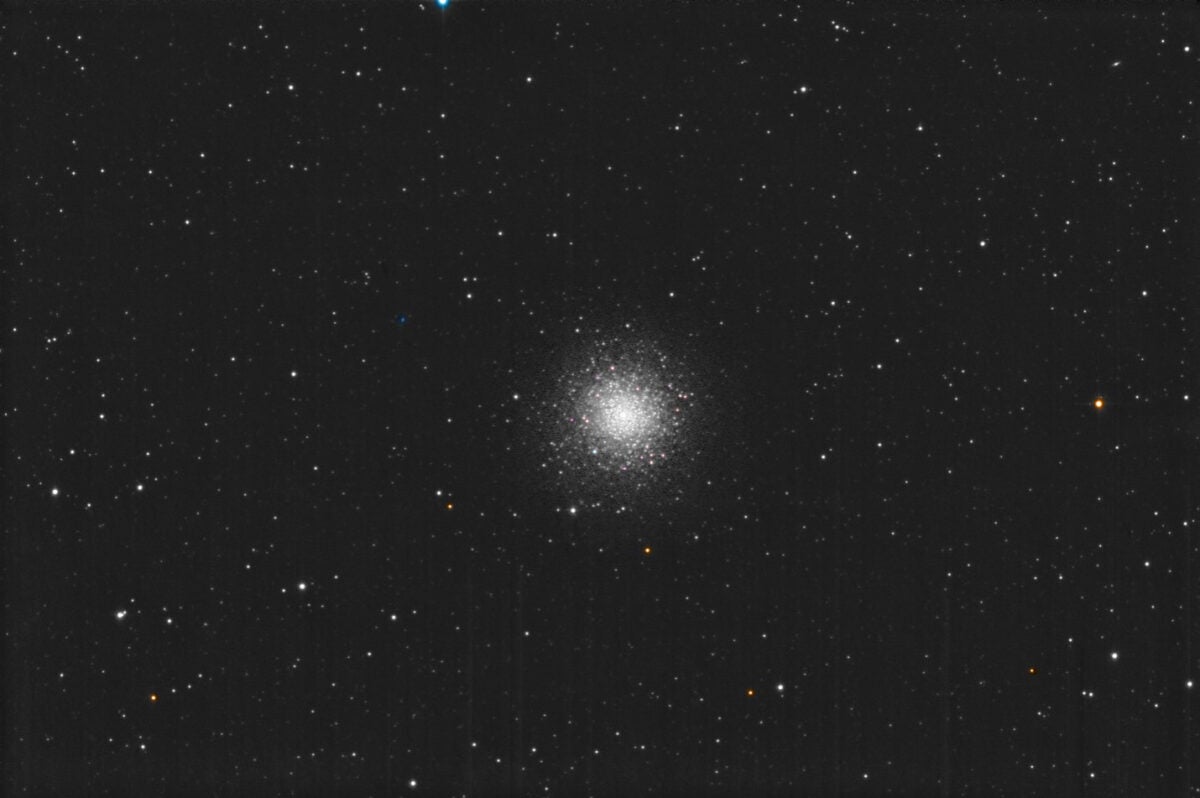
M75 occupies an area of only 6.8′ in a region devoid of bright stars and is the only Shapley-Sawyer Class I globular in the Messier Catalog. Indeed, M75’s core refuses to be resolved even in the largest amateur telescopes. However, the extremely dense core enables it to shine like a beacon from the other side of the galaxy, with a magnitude of 8.5.
Through any size scope, M75 appears as a small ball of light with a dim edge that fades rapidly into the background sky. When viewed through my 17-inch Corrected Dall-Kirkham (CDK) telescope, it gives no hint whatsoever of resolution nor granular texture in its core. However, my CDK does resolve the core spectacularly well in photographs. While most globulars have circular orbits around the Milky Way, M75’s orbit is elliptical, which, like M56’s retrograde orbit, is a strong indication of its extragalactic origin.
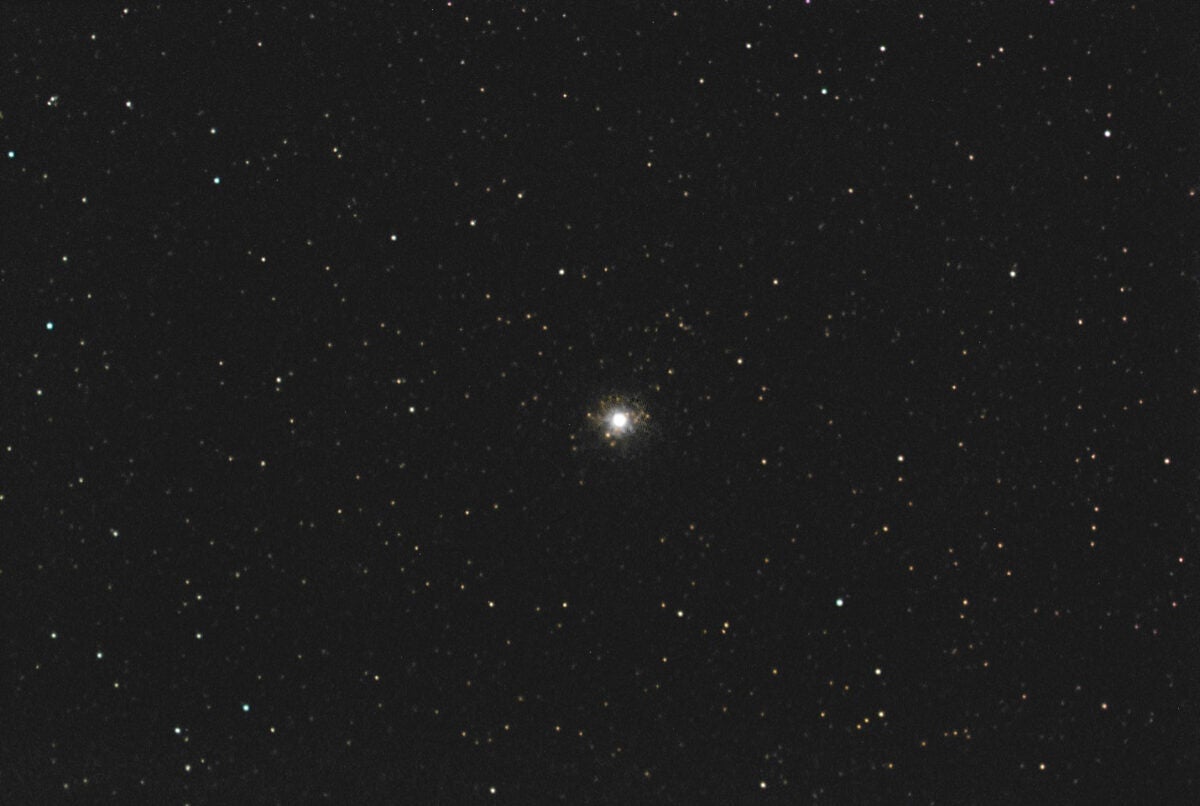
You can run but you can’t hide
Oriented nearly perpendicular to our galaxy’s disk and arching far above the Milky Way’s north and south galactic poles are the Sagittarius streams. A large concentration of stars in these streams lie within an elongated ellipse south of the far side of the Milky Way’s disk. These are the strewn remains of the Sagittarius Dwarf Elliptical Galaxy, which continues to orbit and pass through the Milky Way’s disk 7 billion years after it first collided with our galaxy.
At the center of the concentrated ellipse, we find globular cluster M54 (NGC 6715). Charles Messier first discovered M54 in 1778, but it wasn’t until 1994 that astronomers found it didn’t belong to the Milky Way. Rather, it is the surviving core of the Sagittarius dwarf galaxy. These findings have been robustly confirmed with Gaia data. M54 lies at the immense distance of 87,000 light-years and is currently plummeting toward its fourth encounter with our galaxy’s disk.
M54 can be found a short distance southwest of the bright star Ascella (Zeta [ζ] Sagittarii). It measures 12′ in diameter and shines at magnitude 7.6. My personal notes on Messier objects from the 1980s describe M54 as “perhaps the most boring object in the Messier Catalog.” Indeed, at such a tremendous distance, even the largest amateur scopes fail to resolve M54’s core. Through either my 14-inch or 17-inch scope, its core looks more like a bloated, hazy, out-of-focus star than a globular cluster with a few faint stars resolved around its rim.
However, M54 should not be dismissed so lightly. Gaia simulations indicate the first passage of the Sagittarius dwarf galaxy through the Milky Way’s disk sent gravitational ripples throughout our galaxy, triggering a burst of star formation and generating spiral arms that almost certainly included the birth of our Sun. It appears the Sagittarius dwarf is responsible for more than just the current spiral morphology of our galaxy. Our solar system and all life within it may owe their very existence to that first passage. Accordingly, I now consider M54 one of the most fascinating Messier objects, deserving to be sought out, gazed upon with awe, and even revered.
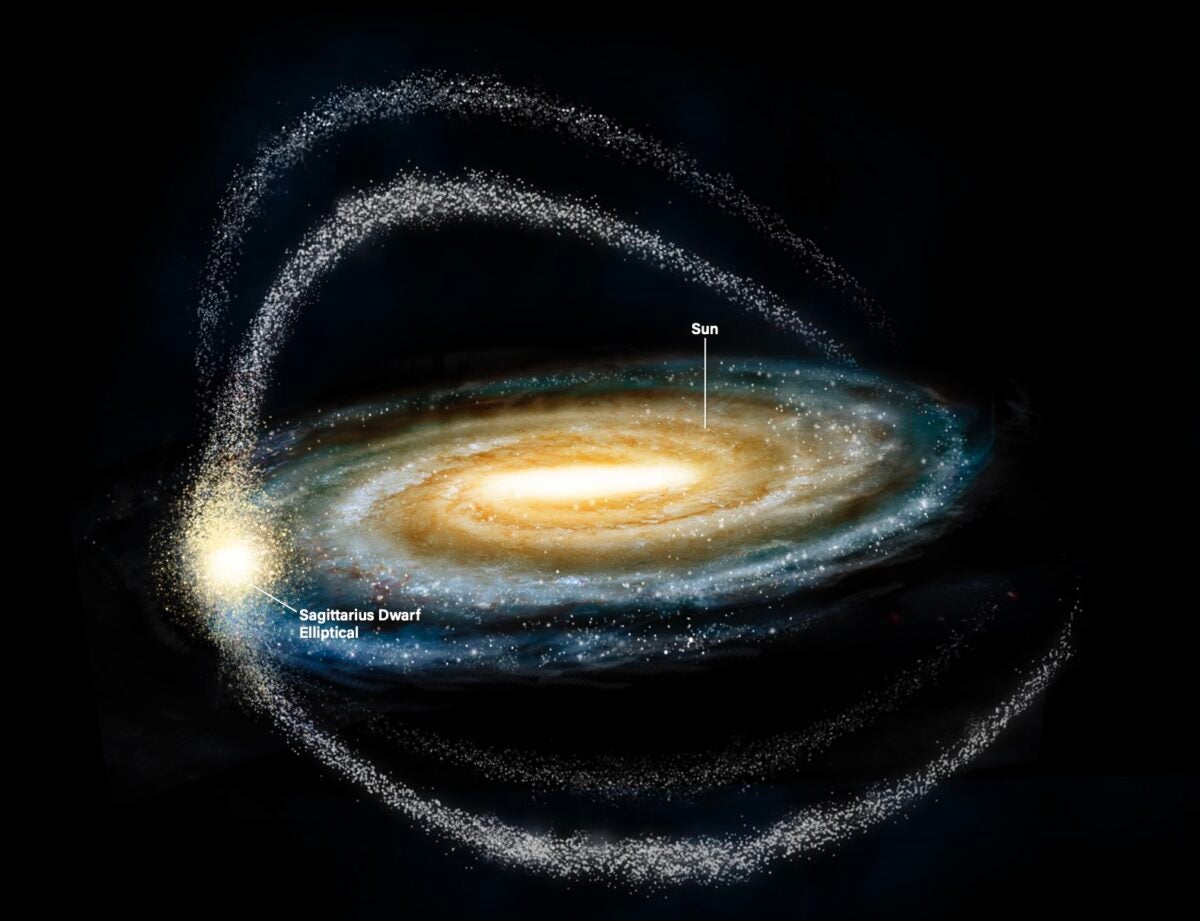
Time to take out your telescope
We live in a universe where the rule among galaxies is “Eat or be eaten.” This cosmic drama will continue billions of years into the future as the Milky Way absorbs the Sagittarius Dwarf Elliptical Galaxy and the Magellanic Clouds, and eventually collides and merges with the Andromeda Galaxy to form a giant elliptical galaxy. I hope you will seek out each of these objects (or their remains) and view them with a new sense of awe and wonder as you contemplate their dramatic roles in the building of our home galaxy.
We observers are among the privileged few who can still view remnants of the Milky Way’s dynamic mergers with our own eyes. Don’t let this opportunity pass you by.





